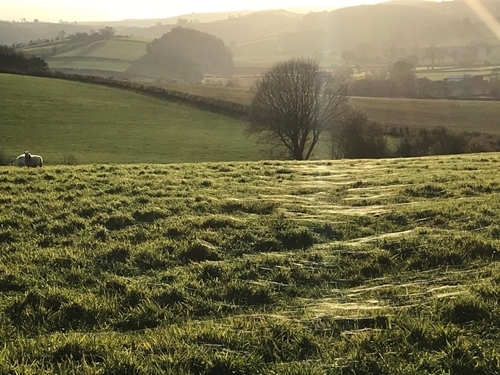Written by Sue Evans, Director of GWCT Cymru
3 Minute Read

Since my CLA policy days sitting on the Welsh Climate Change group, I’ve wondered whether a lot of our Welsh meat is carbon neutral. At that time New Zealand was claiming that their meat was carbon neutral and I couldn’t understand how ours was so different. Then I discovered that the system of calculating carbon that they used was different to ours. So who decides how you calculate the carbon? Why did New Zealand have a calculator that portrayed their meat production so much more carbon-friendly than ours? Shouldn’t our Welsh Government be promoting the green credentials of our meat production as most of our land won’t grow other crops? Are we taking into account all the carbon benefits each farm delivers?
Following my blog on “When not to plant trees?” it seems that Alan, a small scale organic livestock farmer who is part of a farmers group is thinking along the same lines. He emailed me saying “It seems to me that the key questions for farmers (livestock in particular) are - Permanent (organic) pasture is “good” for water, air and biodiversity. Can it compete with trees on carbon sequestration? If so, how is it best managed?”
After I forwarded the message to our guru Alastair Leake he responded “Yes, grass is good for lots of things especially if low-input. It will lock up carbon but permanent pasture is likely to be at equilibrium albeit at higher Soil Organic Matter levels than arable or rotational pasture. Low input also means low stocking densities so reduced compaction which is better for water infiltration and lower Nitrous Oxide emissions.
Add trees in as a silvo-pastoral system then you will increase the carbon sequestration. You will need to protect the trees from the stock (although some of our work is looking at tree fodder as a means of providing a more diversified diet). However, you do it you do still have to protect the tree somehow. Animals benefit from the shade and shelter of the trees. Again, you may need to thin to keep grass growing. That's what our trial at ARET is about. Hedgerow trees on stock farms also a good way to give shelter whilst not obstructing silage or hay-making activities.”
Alan’s second point was that “Our farm relies on meat production and consumption - a big momentum is telling us meat is bad and we should all be vegans. Extensive livestock farming seems to me to enhance biodiversity and perhaps even enhance carbon sequestration. It is very different to hormone fed and/or intensive meat production in its carbon and biodiversity impacts. Getting the facts on this is difficult.”
Alastair added “Much to be said for mixed farming in terms of carbon, especially if the stock is fed a high level of home-grown forage. FYM added to arable land is great at lifting soil carbon levels as 180 years of work at Rothamsted have shown.
So how do we get this message across? It seems as if there is a tsunami of anti-meat/livestock across the UK again with an oversimplification of veg being good and meat being bad. Surely the answer must be more balanced. After all isn’t diversity key to a healthy environment?
Further reading: